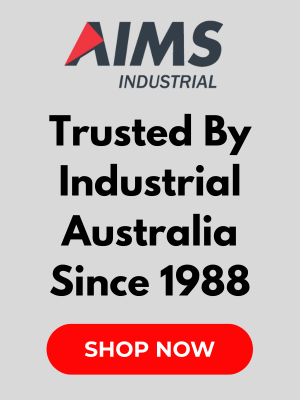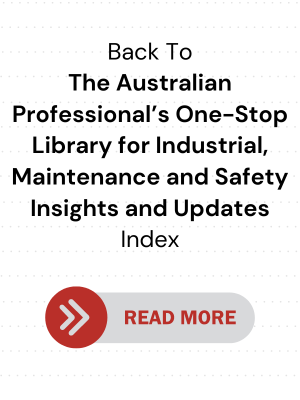Quick Guide to Economic Order Quantity (EOQ)

.png)
- What is economic order quantity (EOQ)?
- The EOQ Formula
- Key considerations when using EOQ
- Additional benefits of using EOQ
What is economic order quantity (EOQ)?
EOQ is the ideal order size that a company should purchase to minimise its total inventory costs. Broadly, these costs include:
- Holding costs (per unit): Expenses related to storing inventory, such as warehouse rent, insurance, security and potential product obsolescence. Some assimilate the special handling and storage fees here, especially when the product is classified as ‘dangerous’, ‘hazardous’ or even fragile.
- Ordering costs (per order): Expenses associated with placing an order, such as administrative costs, processing fees and delivery / transportation (which sometimes could include insurance as well)
- Stockout costs: The costs associated with lost sales and customer dissatisfaction if you cannot fulfill an order.
Investopedia has a more comprehensive explanation here.
EOQ is a powerful tool for dealing with any kind of supplies, because when you understand the model, its variations and its nuances, you can make better informed inventory decisions.
The EOQ Formula
The basic EOQ formula is as follows:
- EOQ = √ (2DS / H)
Where:
- D: Annual demand for the product in a specified period*
- S: Relative ordering cost per purchase order (PO)
- H: Relative carrying / holding cost per one unit in stock for the specific period*
*Usually computed annually
Example:
- D: (Demand) Your company sells 10,000 units of a particular type of bearing per year.
- S: (Ordering cost) Each time you place an order, it costs AU$100.
- H: (Holding cost) You estimate it costs AU$2 per year to hold one unit of the component in inventory.
Plugging these values into the formula:
- EOQ = √ (2 * 10,000 * 100 / 2) = √1,000,000 = 1,000 units
This means the ideal order size to minimise inventory costs is to order 1,000 bearings at a time.
Key considerations when using EOQ
It would be wise to factor in these common ‘variables’ as you determine the optimal EOQ:
- Assumptions: The EOQ model relies on certain assumptions, such as constant demand and consistent ordering and holding costs. Real-world scenarios might involve fluctuations.
- Obsolescence: How quickly does the product expire?
- Special storage requirements: Does the product require special conditions for storage (ie dehumidification, refrigeration etc)?
- Quantity discounts: Suppliers often entice purchasers with bulk discounts, so you might calculate EOQ while assessing if taking advantage of such volume-based mark-downs outweighs the slightly increased holding costs.
- Timing: Will you have enough inventory levels to accommodate just-in-case (JIC) or just-in-time (JIT) requirements?
For complex scenarios, consider these models / variations to the basic EOQ model:
- Quantity Discount Model: This factors in discounts for larger orders, considering that suppliers will often entice you with bulk discounts, so you might as well assess if taking advantage of such volume-based mark-downs outweighs the slightly increased holding costs.
- Reorder Point Model: This factors in lead time to determine when to place an order to avoid stockouts, considering that delivery takes time and is where many disruptions happen (which is especially critical for JIT scenarios).
- Safety Stock Model: This factors in calculating for extra inventory needed to buffer against unexpected market demand surges or even supply chain disruptions, which is especially important for mission-critical components.
Additional benefits of using EOQ
Aside from minimising inventory costs, EOQ offers several advantages, such as:
- Contributing to ‘soft savings’ by avoiding incurring the above-mentioned costs (holding, ordering and stockout), and then some.
- Enhancing logistical and warehousing efficiency, thereby giving you a sense of having made the ‘best compromise’ in terms of cost and inventory.
- Optimising inventory levels, thereby streamlining operations, thanks to a more organised approach to inventory management that saves you time, resources and warehouse space.
- Optimising your cash flow by making it more ‘allot-able’ to other business needs by significantly reducing cost and waste.
- Reduced stockouts by maintaining sufficient inventory levels to keep your operations going, thereby making you continuously meet market demand.
Another example:
You run a small machine shop that uses a specific type of industrial lubricant, with the following assumed figures:
- D: You use 500 litres of this lubricant per year.
- S: Each time you place an order, it costs AU$40 (including paperwork, shipping etc).
- H: You estimate it costs AU$5 per litre per year to store this lubricant (considering space, insurance, handling etc).
Plugging these values into the formula:
- EOQ = √(2DS / H) = √((2 * 500 * 40) / 5) = √(8,000) = 89.44 litres
This EOQ calculation tells you that the most cost-effective way to manage your lubricant inventory is to order around 90 litres each time you place an order.
In addition:
- Knowing your lead time (how long it takes for an order to arrive) is important to determine when to place your next order so you don't run out.
- If your supplier offers discounts for larger orders, recalculate your EOQ to see if the discount outweighs the potential increase in your holding costs.
In a nutshell
Inventory management is a delicate balancing act, and it easily gets complicated, the more stock you monitor and the more suppliers you deal with.
(By the way, how many suppliers do you really need? We covered that in this guide to choosing industrial suppliers in Australia, together with the most common challenges in maintaining inventory.)
You need to have enough stock on hand to meet manufacturing demand (internally) and market demand (externally) without having to tie up excessive capital in unused products, especially if they expire, take up warehouse space or have special handling / storage requirements
Here is where EOQ becomes useful.
AIMS’ Note on Buying Industrial Supplies
- Breadth and depth of brands and categories: Go with a supplier that offers a wide range of reputable brands across multiple categories and sub-categories.
- Bulk purchase discounts: For large orders, check if you can take advantage of volume leverage. Some suppliers offer business accounts* that give you access to special pricing (volume discounts), preferential support and even credit eligibility (subject to supplier approval, terms and conditions).
- Product and service information: Evaluate the completeness and usefulness of data in their online product listings. Prudent suppliers will include as much useful information as possible to help you assess and compare products. In terms of service info, the supplier’s FAQs (if any) will give you a good idea of their standard policies*, processes and commitments.
- Promotions: Check for ongoing promotional campaigns so you can get the best prices. Many suppliers run regular discount-based promos. Some can point you to government-hosted rebate programmes like the SafeWork NSW $1000 Small Business Rebate.
- Safety compliance: Make sure the product in question meets Australian safety standards and regulations, especially if there are relevant compliance requirements or work health and safety (WHS) laws that apply to your business or state. Look for relevant certifications and markings where necessary.
- Supplier reliability: Choose reputable suppliers with a proven track record of delivering quality products and reliable customer service.
- Warranty and support: Check warranty terms and after-sales support* options, as this can be crucial in case of product defects or performance issues.
- Lead time and availability: Confirm product availability and estimated delivery times to avoid delays in your projects.
- Returns: Familiarise yourself with the suppliers returns and exchange policy in case you receive incorrect or damaged items.
- Delivery: Clarify delivery terms, including estimated delivery times, shipping costs and who handles insurance during transit (where applicable).
*Need help with a purchase decision? Contact us directly via chat or send an email to sales@aimsindustrial.com.au.



.png)